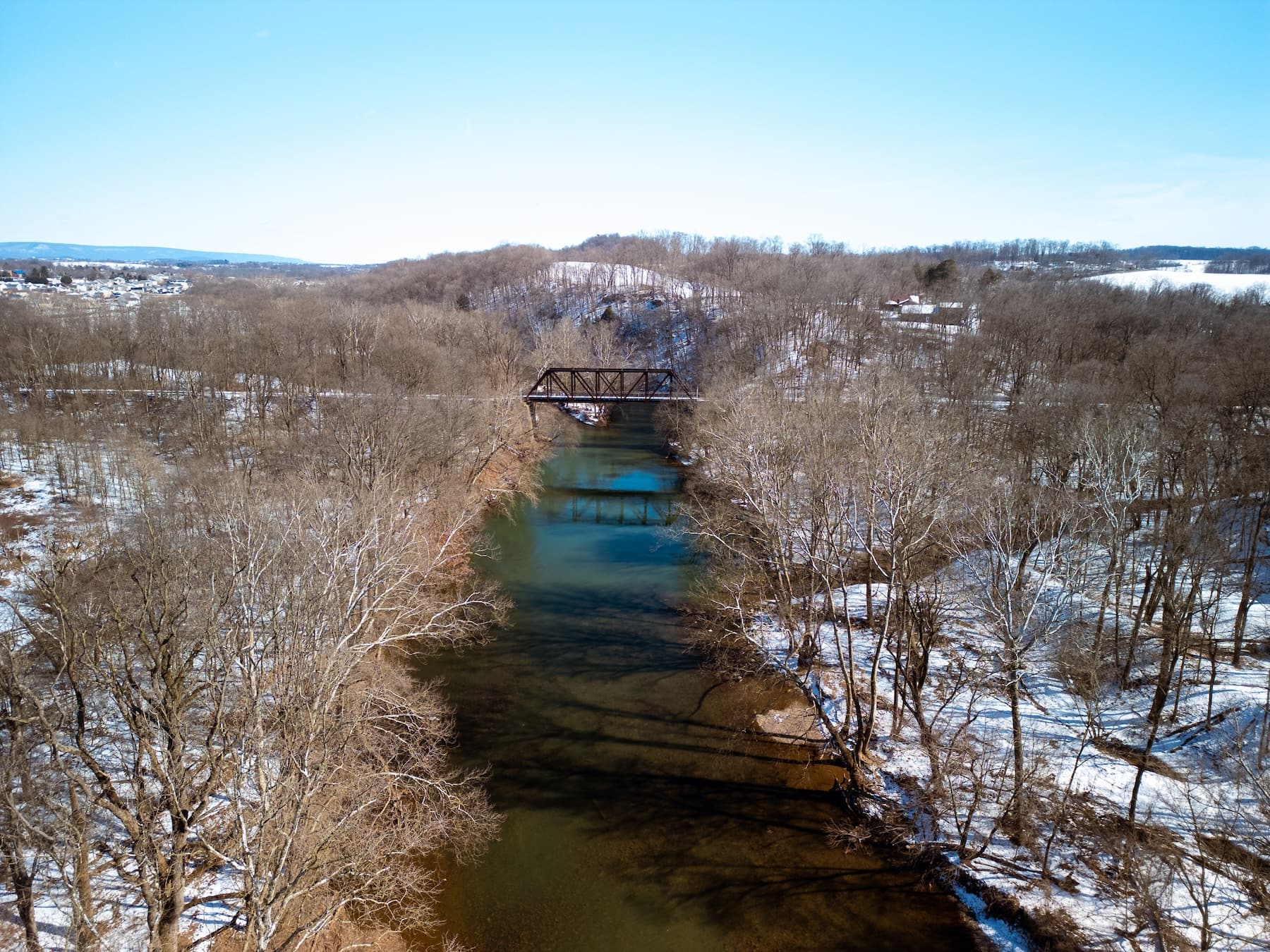It was a perfect day for creek wading — sunny with blue skies, no wind to speak of, and warm.
But the four people in Snitz Creek had a serious task — they were collecting water quality data as part of ongoing monitoring of the Quittapahilla Creek.
Every other month, monitoring teams take to the water to sample two sites along the creek’s main stem and four sites on its main tributaries — Beck, Killinger, and Snitz creeks and Bachman Run.

Read More: Local chapter awarded $10,000 grant to monitor the Quittapahilla Creek
At the streamside, the teams measure water quality data, including temperature, pH, dissolved oxygen, and specific conductivity. Each of these parameters can affect aquatic organisms’ ability to survive as well as indicate stream health.
Also recorded are stream depth, channel width, and stream flow.
Following strict protocols, the teams also collect water samples, which are taken to DEP’s Bureau of Laboratories in Harrisburg. Those samples are analyzed for metals, sediment concentrations, and the presence of nutrients, such as phosphorous and nitrogen.
“It takes many years of data collection before we can draw trends or conclusions about what is going on in terms of the stream’s health,” said Katie Hollen, a watershed specialist with the Lebanon County Conservation District, which supports the effort, and who was on the team at Snitz.
Read More:
- Quittapahilla Creek tour highlights dramatic changes in less than a year
- Quittie restoration at 22nd Street is complete, but won’t look ugly for long
- Where did the trees go along the Quittapahilla Creek in North Cornwall?
- Quittapahilla Watershed group spotlights Quittie Creek stream restoration project
“Ideally, we’re learning where work needs to be done in the Quittie watershed, which tributaries are contributing nutrients, sediment, and bacteria, and which pollution hotspots to target,” she added.

The 22-mile-long Quittapahilla Creek runs entirely through Lebanon County with its headwaters or source on a farm near the Lebanon County Career and Technology Center in South Lebanon Township. Largely paralleling SR 422, the Quittie flows through Lebanon and Annville-Cleona before meandering through agricultural lands and finally joining the Swatara Creek near Palmyra.
DEP has designated the Quittie as “impaired,” which means it fails to meet one or more water quality standards. These include not clean and pure enough to support aquatic life; to serve as a water supply for drinking, agriculture, or industry; or to be used for recreation.
Different sections of the Quittie are impaired for different reasons. DEP lists streambank destabilization, urban runoff, and pathogens in the stretch near the headwaters as impairment sources impacting aquatic life, according to DEP’s Integrated Report Viewer, Integrated Water Quality Report – 2024.
Pathogens, urban and agricultural runoff, and storm sewers are cited as sources of impairment for aquatic life and recreation in the section south of Cleona.
Of particular concern for water quality are levels of phosphorous and nitrogen. Too much of both can lead to eutrophication or excessive plant growth. That, in turn, leads to depletion of oxygen in the water, harming aquatic life.
Sources of those nutrients include runoff of fertilizer from agricultural fields and residential areas as well as manure.
Since its founding in 1997, the Quittapahilla Watershed Association has been working to improve the water quality in the watershed. Besides restoring streambanks to reduce sediment, QWA has planted riparian buffers to control erosion and created wetlands, said Michael Schroeder, QWA president, who was also helping with the water quality monitoring on Snitz Creek.
“We began developing a systematic water quality monitoring program in 2018 so that we could demonstrate that the work we’ve been doing in the watershed is making a difference,” Schroeder said.
Howard “Willie” Bixler, a member of the Doc Fritchey chapter of Trout Unlimited, recalled that in the 1960s and ’70s, he couldn’t see the bottom of the Quittie because of poor water quality.
He credits being part of the monitoring teams with deepening his understanding of what’s needed to keep streams healthy.

“No matter what I do in the water, there’s somebody who’s going to be affected by it downstream,” said Bixler, taking a short break from water testing. “It’s a cliché but it’s true, everybody lives downstream.”
QWA is not the only group monitoring Lebanon County’s waterways. In addition to weekly sampling at a few sites, the Penn State Agriculture and Environment Center conducts quarterly testing of the Conewago Creek with several partners at more than two dozen sites throughout the Conewago watershed. Members of the Swatara Creek Watershed Association also do water quality monitoring on a monthly basis.
In addition, both the U.S. Geological Survey and DEP have gauges on several Lebanon County streams that continuously record water quality data.
“There’s a lot of work being done by municipalities, watershed associations, and other organizations and agencies to improve water quality and stream health,” Hollen said. “Healthy waters make for healthy communities.”
Questions about this story? Suggestions for a future LebTown article? Reach our newsroom using this contact form and we’ll do our best to get back to you.

Keep local news strong.
Cancel anytime.
Monthly
🌟 Annual
- Fewer ads
- Member newsletters
- Exclusive events
- All monthly benefits
- Most popular option
- Make a bigger impact
Already a member? Log in here to hide these messages
Quality local journalism takes time and resources. While LebTown is free to read, we rely on reader support to sustain our in-depth coverage of Lebanon County. Become a monthly or annual member to help us expand our reporting, or support our work with a one-time contribution. Cancel anytime.


































